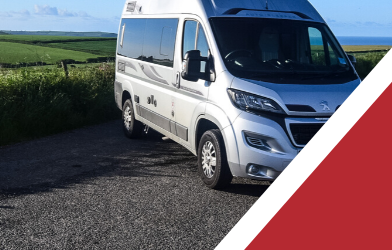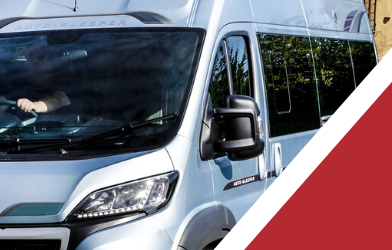After saving some hard-earned cash and with countless destinations reopened after several years of Covid restrictions, your long-awaited motorhome has finally arrived. You took great care and not a little time choosing the vehicle of your dreams – and now it’s sitting in your driveway.
Taking your motorhome on the road for the first time, however, is bound to bring on a flush of the nerves and there are a few things to do to prepare yourself for that first outing – or, indeed, refresh your memory, if you’ve not driven the vehicle for a while.
1. Take stock
Before you go anywhere, just sit in the driving seat and familiarise yourself with the controls. You’ll want to know where everything is, especially in an emergency, but it shouldn’t be too long before your reactions become second nature – just as they should be.
2. Passengers
Your family members are just as likely to want to clamber on board to take that first journey in your new motorhome. But it will probably be less taxing on your nerves if you persuade potential passengers to wait at least until you’ve driven the vehicle around the block a few times.
When you are ready for passengers, you and your co-pilot, of course, will be in the seats facing forward in the cockpit. Eager children, however, may be fighting for seats behind you in the rear of the vehicle – and that’s where a degree of caution and common-sense may need to be exercised.
Guidance published by the Camping and Caravanning Club emphasises this general need for common-sense. It points out that any motorhome first registered on or after the 20th of October 2007 must have seatbelts fitted to “designated travel seats”.
The guidance goes on to explain that only forward and rear-facing seats are suitable as travelling seats – and will, therefore, have the necessary seatbelts appropriately anchored in place. Typically, of course, that rules out side-facing seats as safe travelling seats. Even if these are fitted to such side-facing seats, it is not advisable to use them at all when travelling, because of the danger of injury in a collision.
3. Preparing the vehicle
If you’ve taken delivery of a new motorhome, your supplier is almost certain to have performed all the necessary checks to ensure that the vehicle is in perfect working order.
It is your responsibility, however, to ensure that it stays that way and that everything is packed and stowed away safely and securely.
That means making sure that you know the maximum authorised laden weight of your motorhome and that you do not exceed it. An overloaded vehicle is unsafe since it is more difficult to control, and you are putting excess pressure on the load-bearing tyres. What is more, you face a stiff fine and penalty points on your driving licence if your vehicle is overloaded and you are stopped by the police.
Be careful in the positioning of the items you pack, putting the heaviest on the floor in the middle of the motorhome, other heavier items evenly spread across the remaining floor area and only lightweight items in overhead lockers and cupboards.
Secure everything to make sure none of it shifts while you are on the road.
4. Tyres
Tyre pressures are even more important on your motorhome than on many other vehicles.
The Camping and Caravanning Club suggests that you might consider using TyrePal which constantly monitors the pressure in the tyres and warns you of any pending problems. The Club also recommends the use of a rear-facing camera – especially when you are a novice at manoeuvring a larger vehicle in reverse.
We hope these four quick tips will help you feel confident when you first hit the road in your motorhome. Enjoy your trip!




